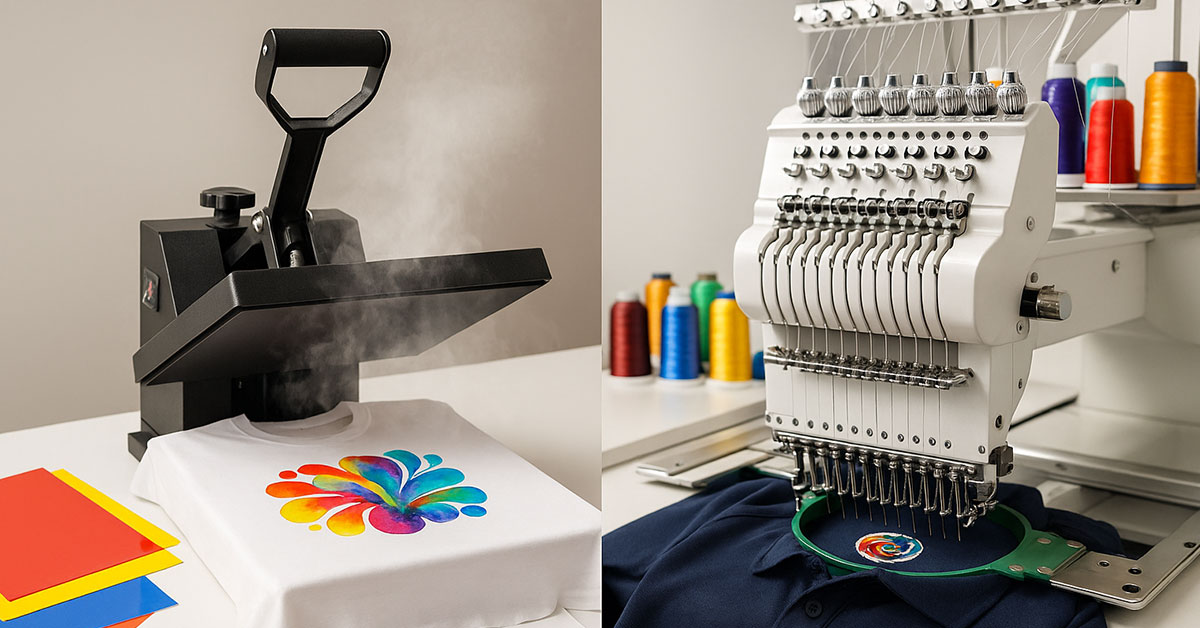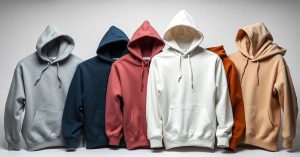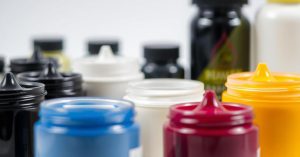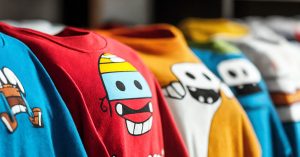When it comes to customizing clothes and creating custom apparel, the debate between heat transfer vs embroidery continues to spark passionate discussions among business owners and fashion enthusiasts alike. Both methods offer distinct advantages and produce unique aesthetic results, but understanding their fundamental differences can empower you to make the most informed decision for your brand’s needs or personal style preferences.
The choice between these two popular customization techniques ultimately depends on several critical factors, including your desired visual outcome, expected durability requirements, budget constraints, and timeline considerations. Each method brings its own set of benefits and potential drawbacks to the table, making it essential to evaluate them carefully before committing to either approach.
Key Takeaways
- Heat transfer delivers vibrant, detailed designs with exceptional color reproduction, while embroidery provides a classic, professional appearance with superior longevity
- Both methods demonstrate varying degrees of durability, making them suitable for different applications and use cases depending on your specific requirements
- Understanding the cost implications associated with each method becomes crucial for small businesses operating on tight budgets and looking for cost-effective solutions
- Production speed and turnaround times can differ significantly between heat transfer and embroidery processes, impacting your ability to meet customer deadlines
- Fabric types compatibility plays a vital role in determining which customization method will deliver the best results for your particular garment choice
Table of Contents
Understanding the Basics of Heat Transfer and Embroidery
In the dynamic world of garment customization and printing methods, mastering the fundamentals of both heat transfer and embroidery techniques proves essential for anyone serious about creating high-quality custom products. The heat transfer process operates by applying controlled heat and pressure to bond a pre-designed graphic or text onto fabric surfaces, utilizing specialized transfer materials and a heat press machine to achieve permanent adhesion.
Embroidery, in contrast, represents a time-honored technique that involves stitching designs directly onto fabric surfaces using high-quality embroidery thread and sophisticated embroidery machines. This method creates raised, textured designs that add dimensional depth and tactile appeal to garments, making it a preferred choice for brands seeking to convey luxury and craftsmanship.
Both heat transfer and embroidery serve as fundamental pillars in the garment customization industry, with each technique significantly influencing the final product’s appearance, feel, and overall quality perception. The decision between these methods extends beyond mere aesthetics, as it directly impacts how consumers perceive your brand’s attention to detail and commitment to quality craftsmanship.
Heat Transfer: The Process Explained
What is Heat Transfer?
Heat transfer represents an efficient and versatile method for personalizing garments by using heat and pressure to bond designs onto various fabric surfaces through a heat press machine. This technique relies on the fundamental principle of applying controlled heat and pressure to transfer graphics, text, or logos from specialized materials directly onto clothing items, creating permanent, vibrant designs that maintain their integrity over time.
The process enables designers and businesses to achieve incredibly detailed and colorful prints on numerous types of garments, from basic t-shirts and sweatshirts to performance athletic wear and promotional items. You’ll find heat transfer particularly effective when working with detailed designs that require precise color matching and intricate graphics that would be challenging to reproduce through other methods.
Types of Heat Transfer Materials
The heat transfer industry offers an impressive array of materials, each designed to meet specific design requirements and fabric compatibility needs. Heat transfer vinyl stands out as one of the most popular options, delivering crisp, clean designs with exceptional color vibrancy and professional appearance that rivals traditional screen printing results.
Transfer paper serves as another excellent choice, particularly when working with full-color photographs, complex gradients, or intricate designs that demand precise color reproduction. Each material type possesses unique characteristics, advantages, and limitations, making it crucial to select the appropriate option based on your specific project requirements, expected durability needs, and budget considerations.
Embroidery: The Art of Stitching Designs
Embroidery represents an ancient art form where detailed designs come to life through the precise placement of each individual stitch, creating raised, textured patterns that add sophistication and permanence to any garment. Modern embroidery machines have revolutionized this traditional craft by introducing computer-controlled precision that ensures consistent quality and enables the creation of complex custom embroidery designs that appeal to diverse audiences.
Each carefully placed stitch contributes to the overall design’s visual impact and tactile appeal, creating embroidered apparel that stands out in today’s competitive marketplace through its distinctive three-dimensional appearance and premium feel.
What is Embroidery?
Embroidery encompasses a decorative technique that involves applying needle and thread to fabric or other materials in predetermined patterns, creating raised designs that add both visual interest and textural dimension to garments. This ancient craft has evolved dramatically from its hand-stitching origins to embrace modern machine-based techniques that utilize sophisticated computerized systems to achieve unprecedented precision and consistency.
Contemporary embroidery processes leverage advanced technology to streamline design creation and execution, making it possible to produce high-quality embroidered designs efficiently while maintaining the artisanal quality that makes this technique so appealing to discerning customers.
Benefits of Using Embroidery Machines
Modern embroidery machines deliver numerous advantages that make them invaluable tools for creating custom clothing and promotional items that require exceptional durability and professional appearance. These sophisticated machines produce designs that demonstrate superior longevity compared to many other customization methods, ensuring that your investment in custom apparel continues to represent your brand effectively over extended periods.
The professional look achieved through machine embroidery helps brands establish credibility and convey quality, making it an excellent choice for corporate apparel, uniforms, and high-end promotional items. Additionally, contemporary embroidery machines operate with impressive speed and efficiency, enabling businesses to fulfill large orders while maintaining consistent quality standards that satisfy demanding customers.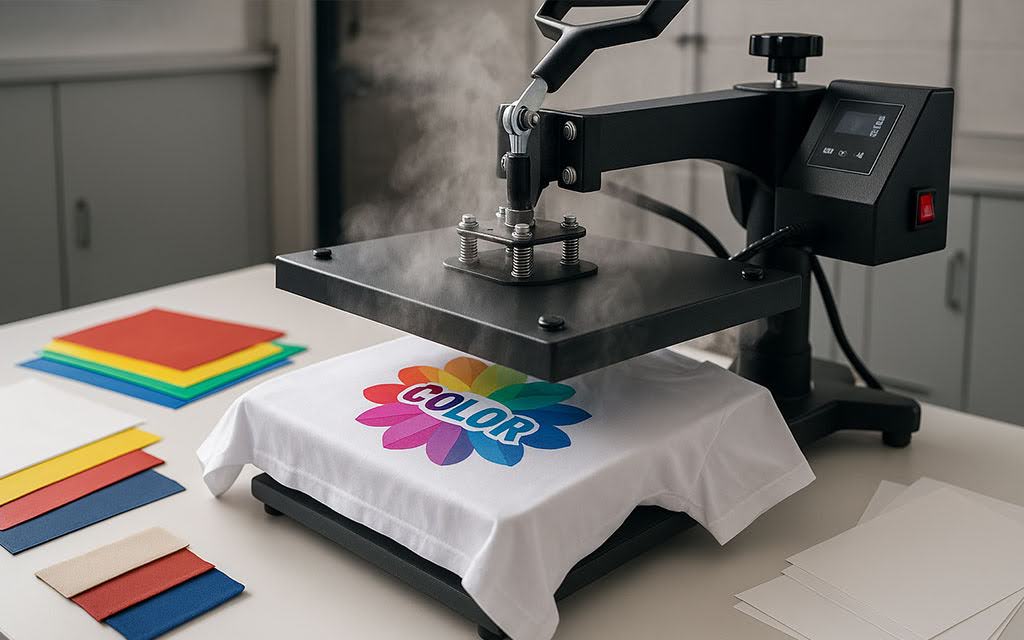
Heat Transfer vs Embroidery: Key Differences
The ongoing debate surrounding heat transfer vs embroidery encompasses multiple critical factors that business owners and individuals must carefully consider, including durability expectations, design complexity requirements, and aesthetic preferences. Understanding these fundamental differences enables you to make informed decisions that align with your specific needs, budget constraints, and quality expectations.
Durability and Longevity of Each Method
When comparing durability between these two methods, heat transfer materials may experience gradual degradation over time, particularly when subjected to frequent washing cycles and harsh detergents that can cause designs to crack, fade, or peel away from the fabric surface. However, high-quality heat transfer materials and proper application techniques can significantly extend the lifespan of these designs.
Embroidery, conversely, demonstrates exceptional longevity because the stitching process integrates the design directly into the fabric structure, creating a permanent bond that can withstand countless wash cycles without losing its visual appeal or structural integrity. For applications requiring maximum durability and long-term brand representation, embroidered designs typically provide superior value and lasting performance.
Complexity and Detail Capability
Design complexity represents another crucial consideration in the heat transfer vs embroidery comparison, with each method excelling in different areas of design reproduction. Heat transfer techniques shine when reproducing highly detailed graphics, photographic images, and designs with multiple colors that require precise color matching and smooth gradients that would be impossible to achieve through stitching alone.
Embroidery demonstrates its strengths in creating bold, impactful designs that benefit from raised textures and dimensional effects, though it may struggle with extremely fine details or designs requiring numerous color transitions within small areas. The choice between these methods often depends on your specific design complexity requirements and the visual impact you hope to achieve.
Cost Analysis: Heat Transfer vs Embroidery
Initial Setup Costs Explained
Understanding the financial implications of choosing between heat transfer vs embroidery requires careful analysis of both initial setup costs and ongoing operational expenses that can significantly impact your business’s profitability. The setup costs for heat transfer operations typically prove more accessible for startups and small businesses, as heat press machines generally range from several hundred to a few thousand dollars, depending on size and features.
Embroidery machine investments represent a more substantial financial commitment, with quality commercial-grade machines often costing several thousand dollars or more, reflecting their sophisticated computerized controls and precision stitching capabilities that enable professional-quality results.
Cost-Effective Solutions for Small Businesses
Small businesses must carefully evaluate their production volume expectations and customer demands when determining which method offers the most cost-effective solution for their specific situation. For businesses experiencing low or fluctuating demand, heat transfer methods often provide greater flexibility and lower cost per item, making them ideal for testing market demand or fulfilling small custom orders without significant upfront investment.
However, businesses planning to produce large volumes of custom apparel may find that embroidery offers better long-term value despite higher initial costs, as the cost per unit typically decreases with volume, and the superior durability reduces replacement costs over time.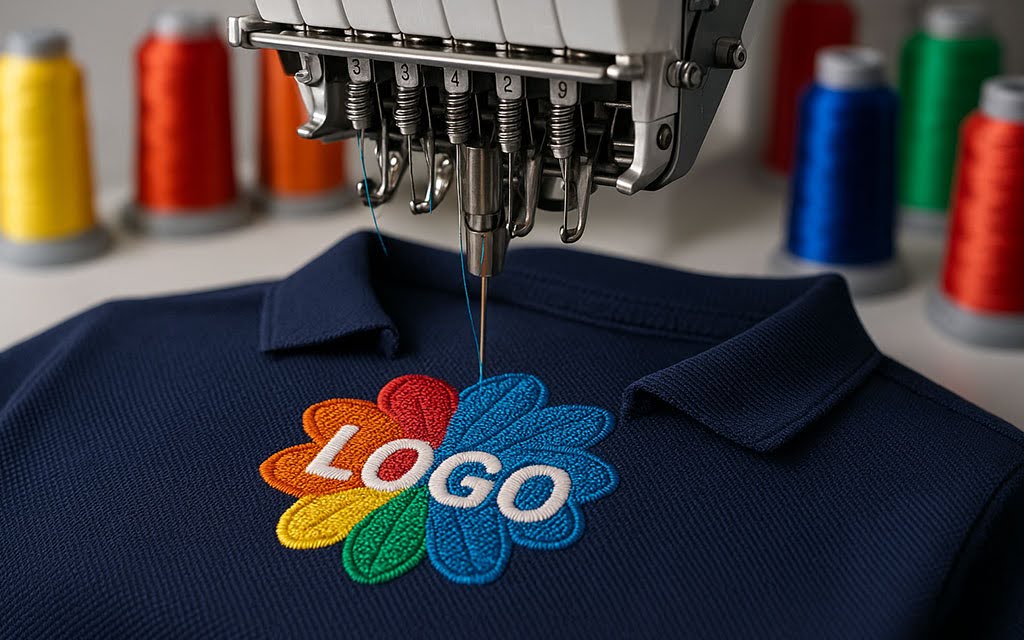
Turnaround Time: Which Method is Faster?
Speed of Production with Heat Press
The heat press method excels in production speed, making it an excellent choice for businesses that frequently handle rush orders or time-sensitive projects that require rapid turnaround times. Modern heat press equipment can complete individual items in seconds, enabling operators to fulfill large orders efficiently while maintaining consistent quality standards that meet customer expectations.
This speed advantage becomes particularly valuable when dealing with urgent custom orders that require same-day or next-day delivery, allowing businesses to capitalize on last-minute opportunities and provide superior customer service.
Lead Times for Embroidered Apparel
Embroidered apparel production typically requires longer lead times due to the intricate nature of the stitching process and the time required to properly set up and program embroidery machines for each unique design. Complex designs with multiple colors and detailed patterns may require several minutes or even hours per item, depending on the design’s complexity and size requirements.
While this extended production time may seem disadvantageous, many customers willingly accept longer wait times in exchange for the superior quality and professional appearance that embroidery provides, making advance planning essential for businesses specializing in embroidered products.
Production Method Comparison
Factor | Heat Transfer | Embroidery | Winner |
Setup Time | Minutes | Hours for complex designs | Heat Transfer |
Production Speed | Seconds per item | Minutes to hours per item | Heat Transfer |
Design Detail | Excellent for photos/gradients | Best for bold, simple designs | Heat Transfer |
Durability | Good with quality materials | Excellent – permanent stitching | Embroidery |
Professional Appearance | Good – smooth finish | Excellent – premium texture | Embroidery |
Color Limitations | Unlimited colors possible | Limited by thread availability | Heat Transfer |
Cost Per Item (Low Volume) | Lower | Higher | Heat Transfer |
Cost Per Item (High Volume) | Moderate | Lower | Embroidery |
Different Fabric Types: Compatibility with Design Methods
It’s important to know how fabrics work with heat transfer and embroidery techniques, as each method demonstrates unique strengths and limitations when applied to different fabric types. The right fabric choice significantly affects the quality and durability of your custom apparel, making material selection a crucial factor in achieving professional results.
What Fabrics Work Best with Heat Transfer?
Fabrics that can effectively handle high temperatures prove most suitable for heat transfer applications, as the process relies on heat and pressure to create permanent bonds between the design material and garment surface. Cotton emerges as a top choice because of its excellent heat absorption properties and stable structure during the transfer process.
Polyester and cotton blends also work exceptionally well with heat transfer methods, offering good durability and color retention. Nylon can be used successfully, but requires careful temperature control and expertise to avoid fabric damage.
Suitable Fabrics for Embroidery Techniques
For embroidery applications, certain fabrics consistently deliver superior results by providing stable foundations that can support detailed stitching without distortion or puckering. Polyester, twill, and denim represent popular choices among professionals because they can handle intricate stitching patterns without compromising the fabric’s structural integrity.
Cotton blends also perform excellently for embroidery work, combining comfort with durability while providing the stability needed for precise stitching process execution.
Fabric Compatibility Comparison
Fabric Type | Heat Transfer Compatibility | Embroidery Suitability | Best Use Cases |
Cotton | Excellent – Superior heat absorption | Good – Stable stitching base | T-shirts, casual wear |
Polyester | Good – Heat resistant properties | Excellent – Minimal distortion | Athletic wear, polo shirts |
Cotton/Poly Blends | Good – Balanced characteristics | Good – Versatile performance | Mixed apparel lines |
Nylon | Fair – Requires careful temperature control | Fair – Can be challenging | Specialized applications |
Twill | Poor – Heat sensitivity issues | Excellent – Dense weave support | Workwear, custom hats |
Denim | Poor – Thickness complications | Excellent – Durable foundation | Jackets, heavy-duty items |
Branding Considerations: Choosing the Right Method for Your Brand
Businesses must carefully consider whether heat transfer vs embroidery better aligns with their branding method objectives and target audience expectations when selecting a customization technique for their logo or promotional designs. Heat transfer excels at reproducing complex, detailed graphics on various materials, making it perfect for brands that want to showcase vibrant, eye-catching logos with photographic elements or intricate color schemes.
Embroidery, however, brings an inherent sense of luxury and permanence that appeals to brands seeking to communicate quality craftsmanship and attention to detail through their custom products. This technique proves ideal for businesses wanting to project a classic, professional image that conveys stability and reliability to their target audience.
The final choice ultimately depends on your logo complexity, target demographic preferences, and the specific message you want your brand to communicate. Younger, trend-focused brands often gravitate toward heat transfer for its modern, dynamic appearance and ability to reproduce contemporary graphics, while established or luxury brands frequently choose embroidery for its timeless elegance and association with premium quality.
Additionally, garment selection plays a crucial role in this decision-making process, as t-shirts and casual sportswear typically showcase heat transfer designs effectively, while dress shirts, blazers, and formal wear often benefit from the sophisticated appearance that embroidery provides. Understanding different apparel decoration techniques helps businesses make informed choices that align with their brand positioning and customer expectations. By carefully weighing the benefits of heat transfer against embroidery’s advantages, brands can select the method that best enhances their image and supports their long-term marketing objectives.

